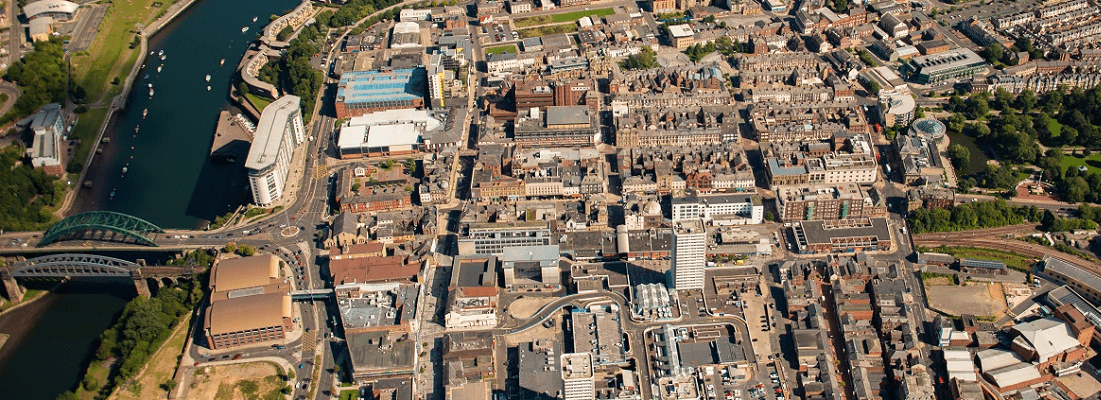5G: The Smart Sunderland
Some may be surprised to learn that the most technologically advanced city in Europe in terms of 5G innovation and deployment isn’t London, Amsterdam, Paris or Berlin, but Sunderland in the North East of England. The city is proud to be the home of three 5G projects, as Liz St Louis, assistant director of Smart Cities at Sunderland City Council, explains.
The future of 5G for smart mobility is an exciting journey during which we are confident we can continue to equip individuals and underpin business competitiveness through an array of improvements across our smart city.
Sunderland’s ambitious City Plan has identified that we will continue to prioritise opportunities to utilise digital connectivity to improve the lives of our city’s residents. We have numerous projects already underway, including a leading telehealth app (SHEILA) designed to mobilise and empower some of our most vulnerable residents, as well as an E-Mobility hub driven by next generation digital infrastructure to offer alternative and sustainable transport for movement across the city.
5G is a truly enabling technology and as our reliance on IoT grows in order to function and progress in an increasingly digital world; 5G, smart cities and urban regeneration are inextricably linked.”

E-Mobility hub
BACKGROUND
Next generation digital infrastructure will underpin the effective operation of the mobility hub. Transport mobility hub, a ‘one-stop shop’ for sustainable mobility choices ranging from e-bikes, e-scooters, electric or ULEV car sharing vehicles, is one of the first use cases to fully leverage the ability of next generation digital infrastructure.
There is a need to expand the use of sustainable travel modes within the city, encouraging the use of alternative modes of travel, to help reduce congestion, reduce vehicle emissions, support the aims of having a ‘healthy city’ (a core theme in the City Plan) and to help with the city’s COVID-19 recovery plans.
The Mobility Hub will initially be a pilot trial utilised by the staff of the new City Hall and then, in phases, expanded to the businesses and institutions located on the Vaux, Riverside and adjacent developments and further to include the population of the city centre.
IMPACT
The Hub will act as a ‘one-stop shop’ for sustainable mobility choices ranging from electric bike, e-scooter hire and Electric/ULEV/hybrid car sharing vehicles. It will consolidate all local staff business travel, providing an alternative to staff using their own vehicles (Grey Fleet) or paying maximum price for public transport tickets and parking. There will be potential to hire out vehicles to the public and staff out of hours and weekends.
With the COVID-19 pandemic, there has been a greater demand for cycle provision and a clearer understanding of the benefits of sustainable and alternative modes of travel to accommodate social distancing requirements has defined solutions.
In this way, the creation of the E-Mobility hub presents a suitable and timely solution to support local people, mobilising otherwise isolated individuals via a wide range of sustainable mobility options.
Improved travel choices provided by a mobility hub will assist with both retaining and creating jobs in Sunderland. This choice provides alternative and sustainable transport for movement across the city.
15 December: Join our webinar debate on autonomous driving
Vivacity traffic mapping
BACKGROUND
The implementation of intelligent traffic mapping across the Wearmouth Bridge, St Mary’s Boulevard and St Michael’s Way in Sunderland is a joint initiative funded by Sunderland City Council in partnership with KBR and Vivacity. Vivacity’s aim is to revolutionise how transport is managed via award-winning Artificial Intelligence technology that captures and classifies live transport usage, 24/7.
The core aims of the city centre project are to gain insights into road usage and the movement of vehicles to enhance future plans, inform accurate predictions and minimise congestion. All underpinned by an eco-conscious drive to help the environment and lessen the damaging effects of congestion and inefficient road use.
IMPACT
The prioritisation of investment into vital infrastructure to advance businesses and improve the lives of citizens across the city, in line with the council’s ambitious smart city vision, is driving many digitally focused initiatives to futureproof Sunderland as a leading smart city.
Via the installation of two antennae and eleven traffic mapping sensors, the data obtained from this exercise has already brought immediate insights and improved intelligence around the traffic flow in this area of the city, including:
- The ability to track vehicle times between junctions and see when there are delays, traffic build ups or the impact of temporary road works
- Observe vehicle movements and clearly differentiate the different types of vehicles using the road at any given time, including private cars vs public transport and commercial vehicles
- Monitor the use of public transport as well as other non-vehicular road users such as cyclists and pedestrians
SHEILA app for health and homecare
BACKGROUND
As new technology continues to play a significant role in the delivery and support of community care services across the UK and the world, Sunderland’s digital ambitions drive the city forward to remain at the forefront of research and development around Assistive Technology (AT) and telehealth solutions.
To prove this concept, during 2018/19 Sunderland brought together a number of organisations to collaborate on the Internet of Things (IoT) national test bed pilot. The organisations included a wide variety of partners: Sunderland City Council, Sunderland Software Centre, the Digital Catapult North East and Tees Valley (NETV), health commissioners in Sunderland, the Local Government Association and NHS digital.
The pilot programme developed a software platform, SHEILA (Social Health Enabling Independent Living App), which is a progressive web app. It has all the functionality and feel of an app on a care user’s phone, but the power of a website sitting behind it and is capable of being connected to a series of the sensors installed in homes. The connectivity relied primarily upon fixed and mobile broadband to link the software with the sensors.
IMPACT
The intuitive software means that the platform collates the data and presents it in a comprehensive user interface for family/informal carers, or Council care providers, to easily use and analyse.
Additional functionality enables ‘push alerts’ such as SMS text alerts, which allow a family/informal carer to passively monitor the wellbeing of the vulnerable individual.Already over 360 families across the city have been supported to access an AT solution to their problems. Having implemented the operational infrastructure, this will enable further rollout at scale of this smart technology and provide the basis for meeting the city plan target of supporting 1,500 residents to use smart technology to meet their care needs.
Share your story
Do you have an innovation, research results or an other interesting topic you would like to share with the professionals in the infrastructure, traffic management, safety, smart mobility and parking industry? The Intertraffic website and social media channels are a great platform to showcase your stories!
Please contact our Sr Brand Marketing Manager Carola Jansen-Young.
Are you an Intertraffic exhibitor?
Make sure you add your latest press releases to your Company Profile in the Exhibitor Portal for free exposure.





